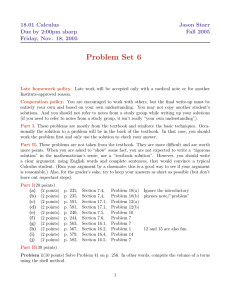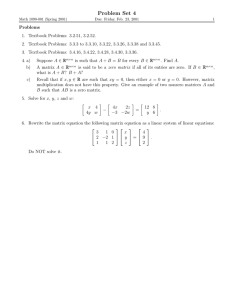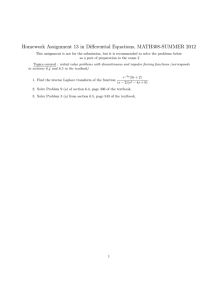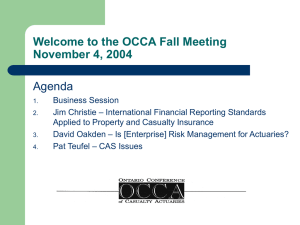Document 13555051
advertisement
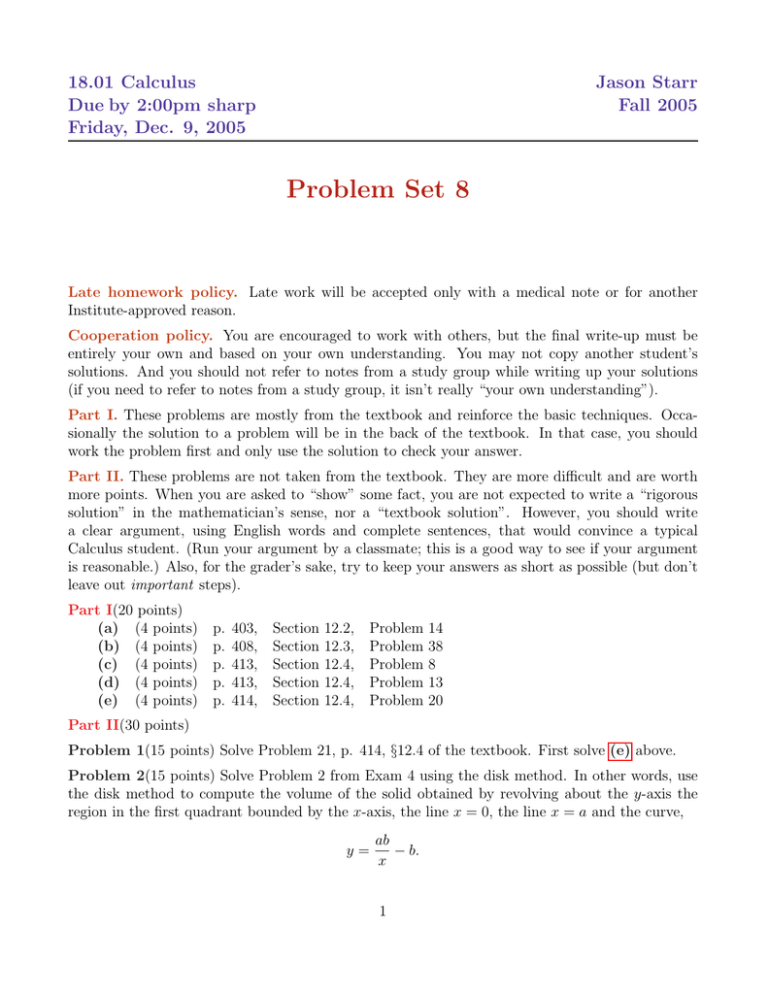
18.01 Calculus Due by 2:00pm sharp Friday, Dec. 9, 2005 Jason Starr Fall 2005 Problem Set 8 Late homework policy. Late work will be accepted only with a medical note or for another Institute­approved reason. Cooperation policy. You are encouraged to work with others, but the final write­up must be entirely your own and based on your own understanding. You may not copy another student’s solutions. And you should not refer to notes from a study group while writing up your solutions (if you need to refer to notes from a study group, it isn’t really “your own understanding”). Part I. These problems are mostly from the textbook and reinforce the basic techniques. Occa­ sionally the solution to a problem will be in the back of the textbook. In that case, you should work the problem first and only use the solution to check your answer. Part II. These problems are not taken from the textbook. They are more difficult and are worth more points. When you are asked to “show” some fact, you are not expected to write a “rigorous solution” in the mathematician’s sense, nor a “textbook solution”. However, you should write a clear argument, using English words and complete sentences, that would convince a typical Calculus student. (Run your argument by a classmate; this is a good way to see if your argument is reasonable.) Also, for the grader’s sake, try to keep your answers as short as possible (but don’t leave out important steps). Part I(20 points) (a) (4 points) (b) (4 points) (c) (4 points) (d) (4 points) (e) (4 points) p. p. p. p. p. 403, 408, 413, 413, 414, Section Section Section Section Section 12.2, 12.3, 12.4, 12.4, 12.4, Problem Problem Problem Problem Problem 14 38 8 13 20 Part II(30 points) Problem 1(15 points) Solve Problem 21, p. 414, §12.4 of the textbook. First solve (e) above. Problem 2(15 points) Solve Problem 2 from Exam 4 using the disk method. In other words, use the disk method to compute the volume of the solid obtained by revolving about the y­axis the region in the first quadrant bounded by the x­axis, the line x = 0, the line x = a and the curve, y= ab − b. x 1
